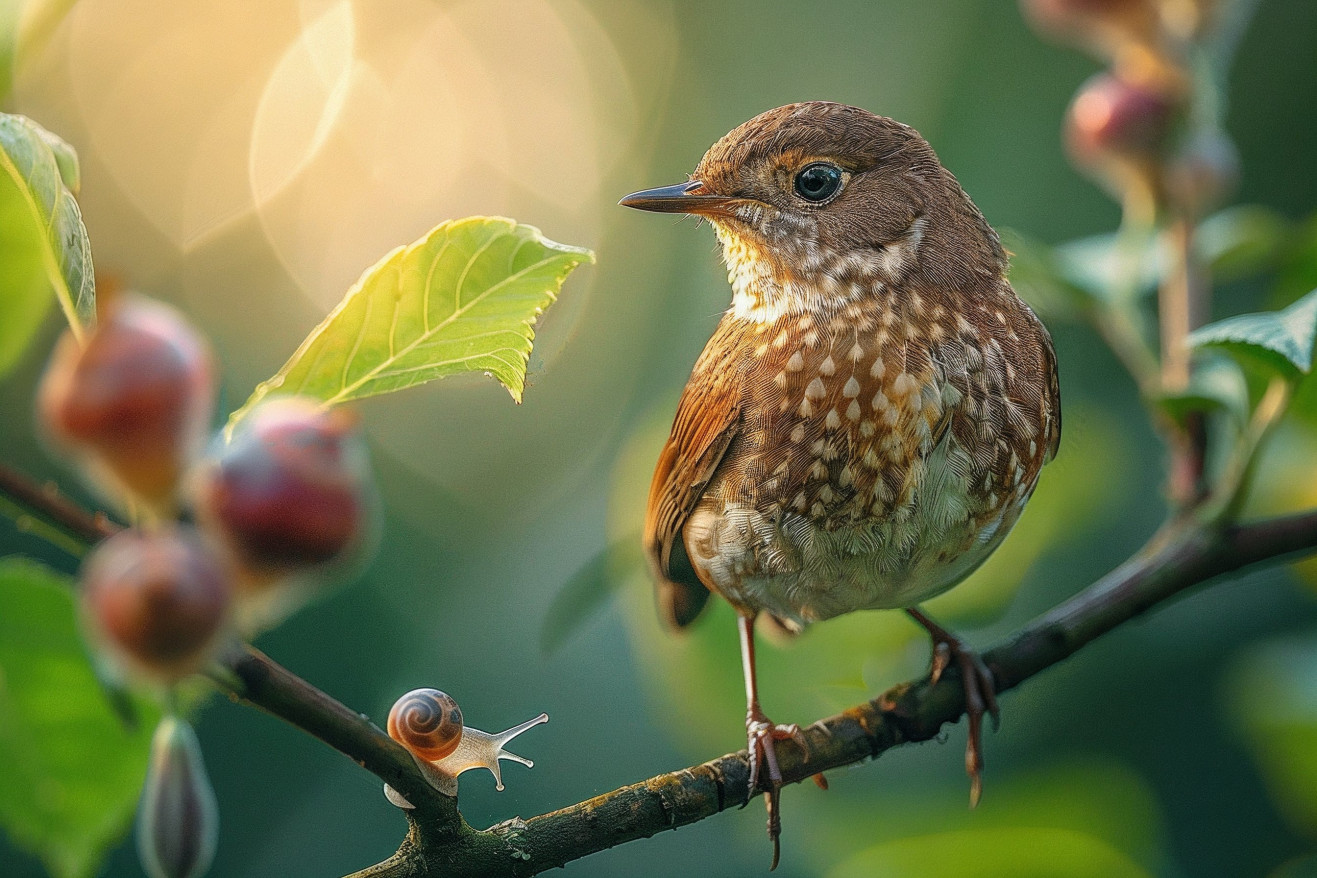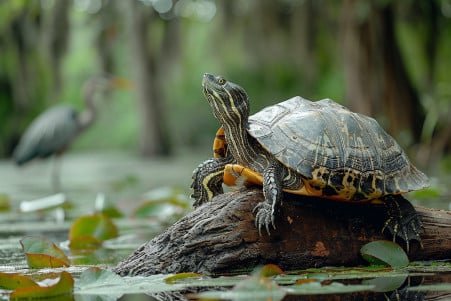What Eats Snails? A Look at Their Predators and Place in the Ecosystem
7 March 2024 • Updated 7 March 2024

From pests in your garden to a fancy meal, snails are a surprising food source for many animals. Birds like thrushes, mammals such as hedgehogs, and reptiles like turtles all eat snails. Invertebrates like beetles and amphibians, especially toads, also consume them. Snails play an important role in many ecosystems and food chains.
If you want to learn more, we’ll look at ecological and zoological studies to see the complex predator-prey relationships that involve snails. We’ve learned from scholarly articles and extensive wildlife studies that have looked at the many different animals that eat snails. In the next few sections, we’ll see how these slow mollusks fit into different ecosystems and how their predators help keep the environment in balance.
What eats snails?
The Snail Food Web and Ecosystem Health
Snails may be small, but they are an important part of the food web because they are a food source for many other animals. The Carnegie Museum of Natural History lists a wide range of snail predators, including invertebrates like beetles and millipedes and a variety of vertebrates such as birds like thrushes and mammals like hedgehogs.
Each of these predators has a different impact on the ecosystem and helps to keep it in balance.
For example, the thrush uses rocks to break open snail shells, which makes the snail inside more accessible and nutritious.
Hedgehogs use their sense of smell to find snails in grassy or wooded areas, which can help keep snail populations in check in gardens. Ground-foraging birds and small mammals depend on snails for calcium and other nutrients, which shows that snails are important for nutrient cycling, according to a study by Ken Hotopp and Tim Pearce.
The variety of snail predators is important for maintaining biodiversity and ecosystem health. A healthy population of snails is a sign of a healthy ecosystem because they are a food source for many animals and help to support the populations of predator species. As a result, the presence and abundance of snails can be used to gauge the health of their populations and the ecosystems they live in.
Snail Defenses: The Shells and Anti-Predator Behaviors of Mollusks
Snails, the slow-moving denizens of gardens everywhere, have evolved a number of ways to avoid their many predators. A study on Lymnaea stagnalis by D.A. Sakharov found that one of the most common anti-predator behaviors is the snail’s retreat into its shell, a basic but effective defense.
In some species, this defense is combined with the production of mucus, which can repel predators, and in the most extreme cases, even the release of blood as a deterrent.
However, not all snails have developed these defenses. As reported by Knowable Magazine, island snails often lack these defenses due to a lack of historical predation, which has made them especially susceptible to invasive predators.
On the other hand, a study from Kyoto University found that mainland snails from the genus Karaftohelix have developed a number of unique defenses, including using their shells to hit attacking beetles and increasing their speed when they sense danger.
These examples show how the pressure of predation can drive the evolution of prey species, leading to a wide variety of adaptations. While these adaptations help ensure the survival of individual snails and, by extension, affect their reproductive success, it’s important to understand how they impact the larger population dynamics that help maintain the balance of ecosystems.
Predator Pressure: The Snail Population Regulator
Predators are a major regulator of snail populations, and their influence goes beyond direct consumption. A study in PMC shows that predation risk has a major impact on the growth and reproductive strategies of snails. For example, the invasive freshwater snail Pomacea canaliculata lays eggs earlier but grows less when it is exposed to the predatory red-eared slider turtle, which the authors say shows a “trade-off between growth and reproduction and survival.”
This predator-prey relationship also has implications for pest control. Predators can keep pest snail populations in check, which can help with conservation and reduce the need for chemical pest control. A study in Ecosphere shows that human modification of rural landscapes can change these relationships, and in some cases, it can even help snails by reducing the pressure from avian predators.
These relationships and the ability to manipulate them are important for maintaining healthy ecosystems and biodiversity. A study in the journal Mathematics suggests that in areas where schistosomiasis is a problem, snail predators should be used as a biological control agent to help manage the spread of the disease. Keeping the relationship between snail survival tactics and predator effectiveness in check is essential for maintaining ecological balance.
Saving the Fragile Future of Snails and Their Predators
The conservation of snails and their predators is an urgent concern. According to Planet Custodian, the most significant threats to snails are habitat destruction and climate change.
More than 1,000 species of mollusks are at risk of extinction, and the loss of these species is also a threat to the predators that depend on them for sustenance. For example, the decline of snails can have a direct impact on birds like thrushes and small mammals like hedgehogs, both of which are important to the maintenance of biodiversity in ecosystems.
Moreover, research published in PMC has shown that the presence of invasive snails like Tarebia granifera can disrupt nutrient cycling, potentially leading to far-reaching impacts on both aquatic and terrestrial ecosystems. This demonstrates the complex relationships between species in food webs, where the loss of one species can lead to a chain reaction.
The preservation of both snails and their predators is important to the health of ecosystems. Conservation efforts should focus on preserving snail biodiversity, which means protecting their habitats and working to reduce the impact of climate change.
Because snails are so important as indicators of the health of the environment and as translators of biodiversity, their preservation is essential to the well-being of many other species, according to Planet Custodian.
As a result, conservation initiatives should take a multi-pronged approach that includes scientific research, policy changes, and public education to ensure that these small but mighty organisms and their place in the web of life are protected.
The Circle of Life: Snails in the Web of Predation
As our trip comes to a conclusion, we can now see the significant role that snails play in our world. They are a source of food for many different animals and are important for the health of the environment. From birds to beetles, snail predators are part of the web of life that maintains nature in balance by controlling snail populations and enhancing biodiversity.
Snails’ many defense strategies, which have evolved over time, are important for their survival and, in turn, the survival of their species. Predators are a natural part of the ecosystem, impacting snail populations and helping to maintain the balance of nature. The interplay between snail predators, snails, and the environment shows how important all of these factors are to a healthy ecosystem.
In conclusion, it is important to protect snail biodiversity. Conservationists need to work to protect snails and the web of life that they are part of. Protecting the balance of nature means protecting both snails and their predators, and this will take ongoing research, careful planning, and a commitment from everyone.


